


Rhenium chemistry, reduction with zinc
In this sub-page of the rhenium chemistry, the reaction of perrhenate with zinc is explored under different conditions. An experiment is done with a strongly acidic solution and an experiment is done with a dilute and only lightly acidic solution.
![]()
Reduction of perrhenate in moderately concentrated HCl
For this experiment, half of the amount of liquid, obtained in step (1) is transferred to a second test tube and diluted with an equal volume of distilled water. After this step, the liquid becomes really colorless. Any nitrosyl chloride, present in the concentrated acid of step (1) now is hydrolysed and disappears.
Some reagent grade zinc is added to this colorless liquid. This colorless liquid now is moderately concentrated hydrochloric acid with a small amount of nitric acid and some perrhenic acid in it. The pictures below show the liquid, before adding the zinc, a short while after adding the zinc and after almost all zinc is dissolved. The liquid becomes warm after adding zinc.
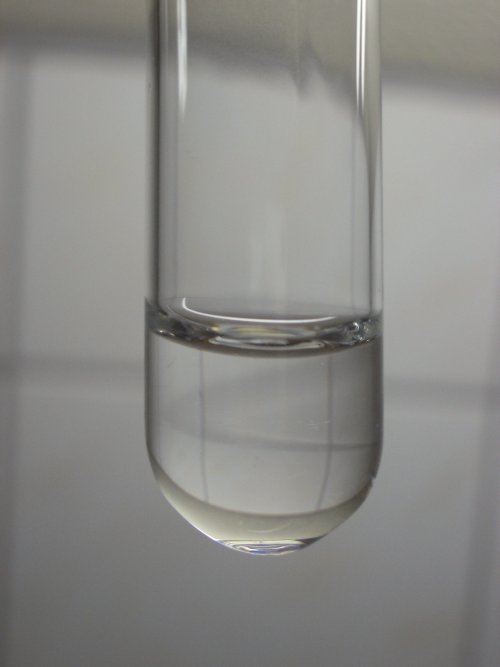
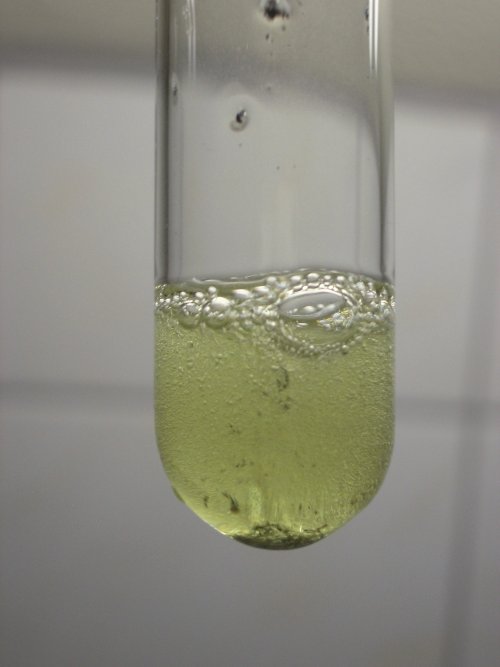
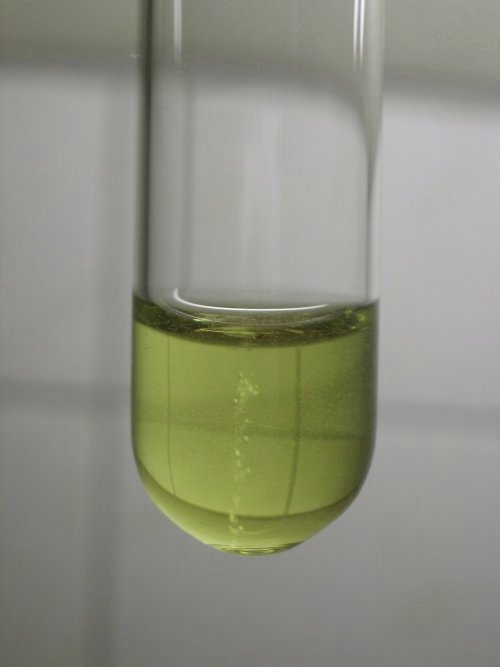
While the zinc dissolves, a yellow/green compound is formed and hydrogen gas is evolved. This yellow/green solution can easily be prepared. As long as the concentration of the hydrochloric acid is sufficiently high, this yellow/green compound is formed.
With concentrated hydrochloric acid, quite some zinc is needed, because most of the zinc then dissolves, forming hydrogen from the acid. So, the optimum will be at moderate concentrations of the acid. At very low concentrations, the perrhenate is reduced to the metal. This is shown below.
![]()
Reduction of perrhenate in diluted liquid
When zinc is added to a much more dilute liquid with some perrhenate in it, then the result is totally different. In this experiment, a very small amount of the liquid from step 1 is taken and it is diluted with an almost 10-fold amount of distilled water. To that liquid, some reagent grade zinc is added. When the zinc is added, then a very slow evolution of gas can be observed, but this evolution of gas soon stops. The pieces of zinc obtain a high polish and it looks as if metallic rhenium is deposited on the pieces of zinc. The pieces stick to each other and they also stick to the glass. The following two pictures show the result of this experiment.
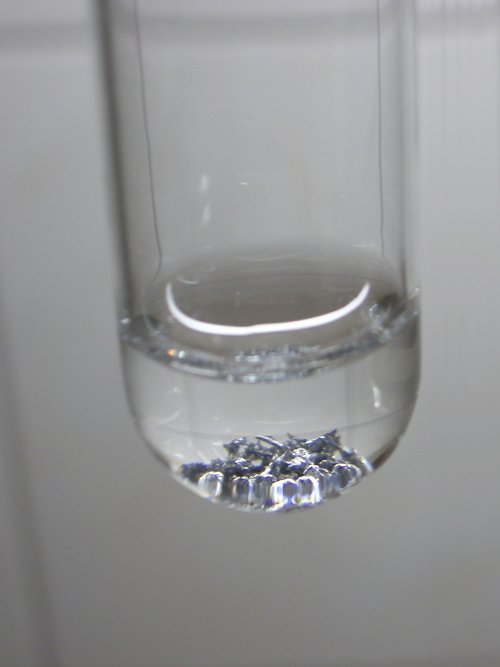
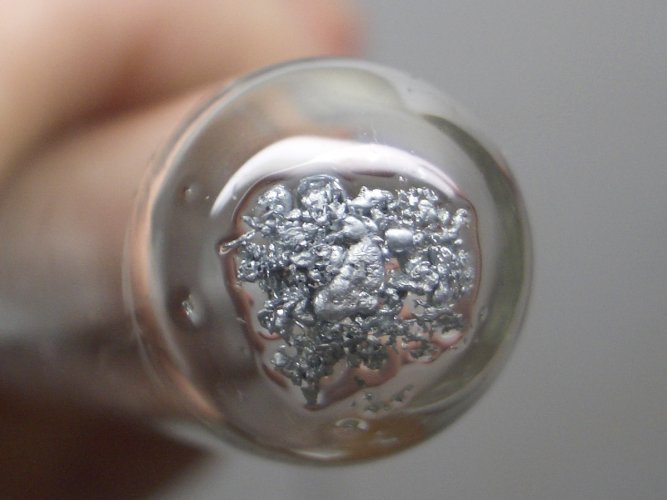
So, the addition of zinc to a very dilute liquid with perrhenic acid, does not result in formation of a nice colored solution, but instead results in deposit of metallic rhenium.
back to main rhenium experiment